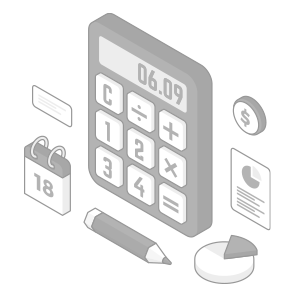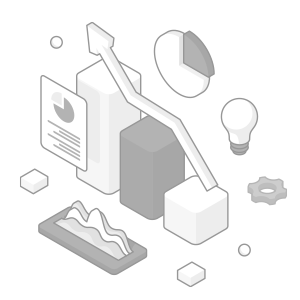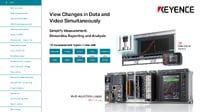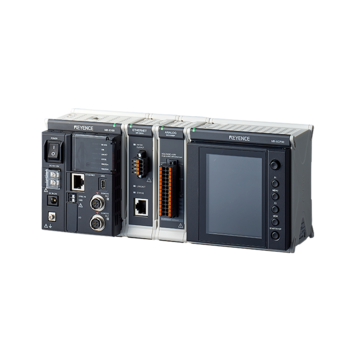Data Acquisition (DAQ)
Sustainable Energy Monitoring: The Role of Eco-Friendly DAQ Systems
-
Tags:
- Renewable Energy

As the world transitions to renewable energy, keeping sources efficient and reliable has introduced its own set of challenges. Unlike fossil fuel-based power generation, solar, wind, and hydroelectric power systems can fluctuate based on environmental conditions; this has created a demand for sustainable energy monitoring technologies that improve energy efficiency.
Eco-focused data acquisition systems
(DAQ) capture real-time data on energy production and environmental factors. These DAQ systems collect, analyze, and store real-time data on key metrics – voltage, current, and temperature measurements – as well as environmental conditions. This helps operators to detect inefficiencies in production or usage.
Why Sustainable Energy Monitoring Matters
Solar and wind don’t operate at a steady output like fossil fuels. Some days, the conditions are perfect for energy production, while other days, cloud cover or low wind speeds reduce efficiency. Without real-time energy monitoring solutions, power generation can be unpredictable, potentially causing energy waste or supply shortages. Thankfully DAQ systems help make sure that every bit of clean energy is used efficiently, which helps facilities adapt to changing and challenging situations.
As countries push for great renewable energy adoption, balancing supply and demand becomes increasingly complex. Grid stability becomes a challenge. As these sources fluctuate constantly, energy consumption monitoring helps track how much energy is being generated and used at any moment, which helps engineers make quick adjustments.
One key advancement is smart grid technology. These intelligent power networks leverage real-time data collection and predictive modeling to help effectively distribute power. By combining DAQ systems with smart grids, utilities can dynamically adjust to fluctuations in solar radiation/wind speeds and energy consumption patterns; all of this improves efficiency while reducing wasted power. The interaction between monitoring and automation helps prevent blackouts and overproduction that often plague renewable energy networks.
We’re here to provide you with more details.
Reach out today!

How DAQ Systems Enhance Renewable Energy Efficiency
Generating renewable energy is only part of the equation, making sure that energy is used efficiently is just as important. Renewable energy systems generate clean power, but keeping them efficient requires continuous monitoring and optimization. Sustainable energy monitoring solutions help operators manage fluctuations in the supply of electricity and collect and analyze key performance data that minimize inefficiencies and improve energy output.
Real-World Applications of DAQ in Renewable Energy
- Solar Farms: Advanced DAQ systems monitor panel angles, enabling precise adjustments that maximize sunlight capture and increase energy conversion efficiency.
- Wind Farms: DAQ sensors detect early signs of wear and tear in turbine components, allowing for predictive maintenance that prevents costly breakdowns.
- Hydroelectric Plants: DAQ-based monitoring of water flow rates and environmental impact helps operators maintain optimal power generation while preserving aquatic ecosystems.
As these renewable energy systems grow in scale, DAQ systems can also scale alongside them. Multi-channel DAQ systems, like the NR-X data logger, provide high-speed, multi-channel data acquisition.
Key Features of Eco-Friendly Energy Monitoring Systems
Modern, sustainability-focused (DAQ) systems provide everything sustainable energy monitoring requires. Not only do they track performance, but they’re scalable, intelligent, and built for sustainability. Here are a few more key features:
Low Power Consumption
One of the core benefits of eco-friendly DAQ systems is their ability to reduce waste. Unlike older monitoring technologies that require significant power to operate, modern systems have been designed with more energy-efficient components. This helps guarantee that the system itself doesn’t contribute to any unnecessary consumption.
Scalability and Flexibility
Renewable energy systems come in different sizes and complexity, and monitoring solutions must be adaptable to different environments. Scalable DAQ platforms can track multiple energy sources—from a single wind turbine to a multi-megawatt solar farm – and provide energy consumption monitoring every step of the way.
Cloud-Based and IoT Integration
Advancements in IOT technology have revolutionized energy monitoring solutions as they are enabled with remote access and real-time data analytics. Cloud-based DAQ systems allow operators to track energy performance from anywhere, which helps reduce the need for onsite intervention.
Discover more about this product.
Click here to book your demo.

Best Practices for Implementing Sustainable Energy Monitoring
Implementing sustainable energy monitoring requires more than just installing new equipment; this technology requires strategic planning and accurate data collection. By following best practices, operators can maximize efficiency and improve the reliability of renewable energy systems.
Conducting an Energy Audit
Before any new technology is deployed, an energy audit should be conducted to assess current energy use and identify inefficiencies. An energy audit helps operators pinpoint where power is lost and where overconsumption occurs. Energy audits also help determine where improvements can be made.
Choosing the Right DAQ System
Not all energy monitoring solutions are created equal. It can be difficult to select a DAQ system that is compatible with a facility’s requirements and potential growth. Factors that should be considered in this decision are scalability, data resolution, adaptability to smart grids, and how easily each system can be used with various types of renewable power.
Keeping Data Accurate
The value of sustainable energy monitoring solutions depends on the precision of the data collected. The use of high-resolution sensors, like data logger NR Series, along with calibration and validation data helps improve the accuracy of voltage and current readings.
Curious about our pricing?
Click here to find out more.

Future Trends in Sustainable Energy Monitoring
As clean energy becomes the dominant force in global power production, sustainable energy monitoring solutions will continue to advance. Innovations in AI and high-speed data processing are making renewable energy systems more efficient.
The NR Series DAQ systems feature advanced Excel export functionality with support for custom templates. This allows engineers to analyze patterns, monitor performance, and make data-driven decisions. With direct export to Excel, users can easily visualize trends, assess system health, and plan maintenance, all without needing complex third-party software.
High-speed data processing is driving the adoption of edge computing, reduces latency by processing data closer to the source, and 5G connectivity in devices. Meanwhile, 5G networks are used to transport this data, thereby improving the responsiveness of the DAQ system.
Smart grids and IoT-enabled DAQ systems improve sustainable energy monitoring solutions by keeping devices connected across energy networks. IoT sensors can be attached to solar panels and wind turbines to collect and transmit real-time data, helping operators make quick decisions and adjustments.
Emerging Technologies in Renewable Energy Tracking
One of the most promising developments in sustainable energy monitoring solutions is digital twin technology. This is used to create virtual models of energy systems to simulate real-world performance. Thanks to the ability to mirror solar farms, wind turbines, and hydroelectric plants in a digital environment, operators can test system adjustments before applying them to the field, reconfigure energy distribution, and predict inefficiencies.
Another game-changer in energy analytics is quantum computing. Traditional computing methods struggle with the immense quantity of data. Quantum computing can process these massive data sets at unprecedented speeds, and it can improve energy forecasting and improve grid stability. This technology is still in the earliest stages but holds the potential to change DAQ systems and how they handle simulations.
Optimize energy efficiency with sustainable DAQ systems, monitor smarter with KEYENCE today!
Contact us to learn more about how our advanced technology can help take your business to the next level.
Contact Us



